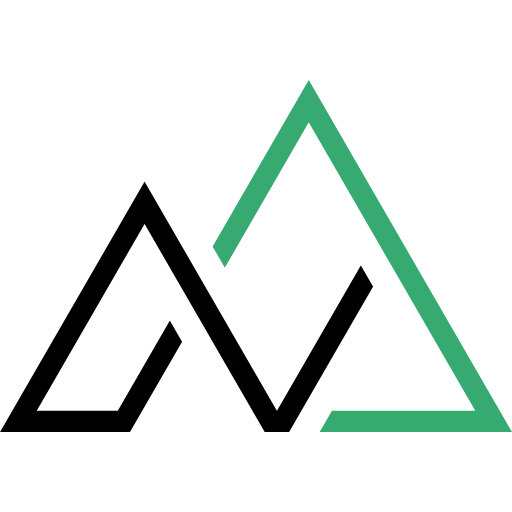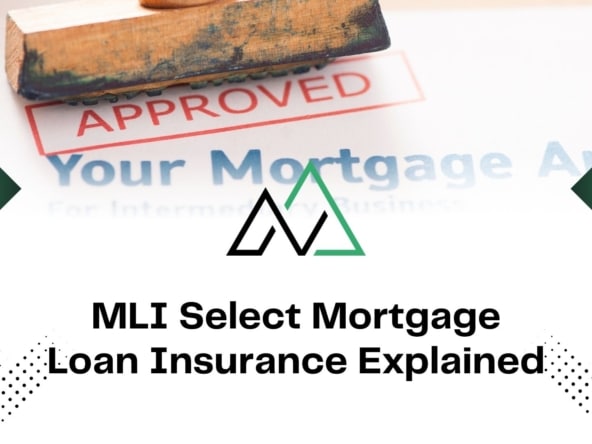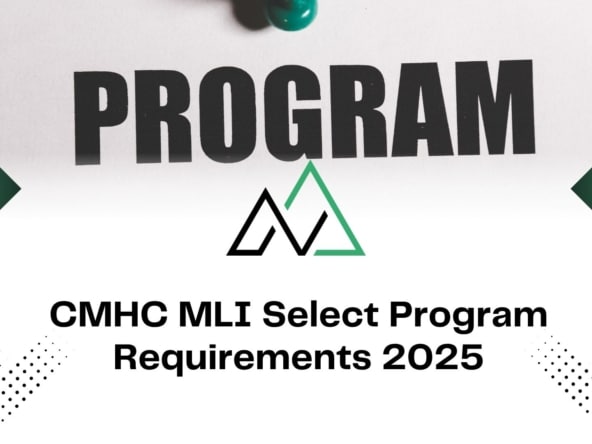Buying a house in Canada with bad credit can seem tough. But New Homes Alberta is here to help. Your credit score doesn’t have to stop you from owning a home.
In Canada, credit scores range from 300 to 900. Scores below 560 are seen as bad credit. Even with bad credit, you can find loans to buy a home. It takes smart planning and knowing about different mortgage options.
Many Canadians buy homes despite bad credit. They use creative financing and work with lenders who get unique financial situations. This shows that owning a home is possible, even with credit issues.
Key Takeaways
- Credit scores below 560 are considered bad in Canada
- Alternative lending options exist for poor credit borrowers
- Higher down payments can offset credit score limitations
- Specialized mortgage brokers can help navigate bad credit challenges
- Credit improvement is possible with dedicated financial planning
Understanding Bad Credit Scores in Canada
Understanding credit scores can be tough for those looking to buy a home. In Canada, credit scores are key when applying for a mortgage, even for those with low scores. Knowing your credit score is the first step to fixing it for home buying.
Credit scores in Canada range from 300 to 900. These scores show how well you manage your finances. They are important because lenders use them to decide if they can trust you with a mortgage.
Credit Score Ranges Explained
| Credit Score Range | Classification | Mortgage Implications |
|---|---|---|
| 300-579 | Poor Credit | Difficult to secure traditional mortgages |
| 580-659 | Below Average | Limited mortgage options |
| 660-724 | Good | Qualifying for most mortgage products |
| 725-759 | Very Good | Competitive interest rates |
| 760-900 | Excellent | Best mortgage terms available |
What Defines Poor Credit in Canada
A credit score below 600 is seen as poor in Canada. Things that can lower your score include:
- Late or missed bill payments
- High credit utilization
- Multiple credit applications
- Bankruptcy or consumer proposals
- Lack of credit history
Impact of Credit Scores on Mortgage Applications
Credit scores affect if you get a mortgage, the interest rate, and the terms. Most banks want a score of at least 650 for regular mortgages. Those with lower scores might need to look at other lenders or work on fixing their credit.
Your credit score is a financial passport – it can open doors or create barriers in your homeownership journey.
For those with low scores, knowing how credit scores work is key. Some lenders might give mortgages to those with scores as low as 500. But, these mortgages usually have higher interest rates and stricter rules.
Traditional vs Alternative Mortgage Options
Understanding the mortgage landscape with bad credit is key in Canada. There are different paths for homebuyers with credit issues. Traditional banks and alternative lenders offer unique options.
Traditional banks have strict credit rules. They usually need a credit score of 660 to approve a mortgage. These banks look for borrowers with solid financial backgrounds and good credit scores.
- Traditional bank credit score requirements: 660+
- Alternative lender credit score range: 500-659
- Subprime mortgages designed for higher-risk borrowers
Alternative lenders offer flexible solutions for those with bad credit. They focus on subprime mortgages. This helps people who traditional banks won’t help.
| Lender Type | Credit Score Range | Interest Rates |
|---|---|---|
| Traditional Banks | 660-900 | Lower rates |
| Alternative Lenders | 500-659 | Higher rates |
| Private Lenders | 500 and below | Highest rates |
When looking at alternative mortgages, remember the higher interest rates and larger down payments. You’ll also need to provide more documents.
Subprime mortgages can be a good choice for those with bad credit. These loans understand that credit scores don’t always show a person’s ability to pay for a mortgage.
How to Buy a House with Bad Credit
Buying a house in Canada with bad credit can be tough. But, there are special mortgage options that help. These options go beyond what regular banks offer.

If banks say no, you can look at other ways to get a mortgage. This includes using alternative credit data and non-traditional lenders.
Working with Alternative Lenders
Alternative lenders help people with credit problems. They are more flexible than big banks. Here’s what makes them stand out:
- They consider borrowers with lower credit scores
- They look at your financial history more thoroughly
- They are okay with some credit mistakes
- They offer custom mortgage plans
Private Mortgage Considerations
Private mortgages are another option for bad credit. They have higher interest rates but can help you buy a home. This is when banks say no.
| Mortgage Type | Credit Score Range | Interest Rate |
|---|---|---|
| Traditional Bank Mortgage | 680-900 | 3.5% – 5% |
| Alternative Lender Mortgage | 600-679 | 5% – 8% |
| Private Mortgage | Below 600 | 8% – 12% |
B-Lender Options
B-lenders are in between banks and private lenders. They help borrowers with special financial needs. Here are some top B-lenders in Canada:
- Alpine Credits
- Prudent Financial
- Clover Mortgage
- Canandalend
- Guardian Financing
To buy a house with bad credit, plan carefully. Learn about alternative credit data. Work with experts who know non-traditional mortgages.
Down Payment Requirements for Bad Credit Mortgages
Getting a mortgage with bad credit can be tough. Lenders want more money down to feel safer. This is true for people with poor credit histories.
For first-time buyers, knowing about down payment help is key. Here are some important points:
- Minimum down payment for homes under $500,000: 5% of purchase price
- Homes between $500,000 and $1.5 million: 5% of first $500,000, 10% above that
- Homes over $1.5 million: 20% down payment required
Those with bad credit often need to put down more money. Good credit? You might get away with 5%. But bad credit? You could need to put down 20-25% down.
Down payment help programs can make a big difference. They offer:
- Government-backed grants
- Tax credits for home purchases
- Low-interest loan programs
- First-time homebuyer incentives
Putting down a big chunk of money can really help. A 20% down payment means no mortgage insurance. This can save you a lot of money, as insurance costs 0.6% to 4.5% of your loan.
Investing in a substantial down payment is a strategic approach to overcoming credit challenges in the home buying process.
Homebuyers with bad credit should look into down payment help. They should also work on improving their credit scores. This can lead to better mortgage deals.
Essential Income and Employment Requirements
Getting a mortgage with tough credit needs a good grasp of income and job needs. Lenders check your financial health in many ways. This makes first-time home buyer programs and other credit data very important for those looking to buy a home.
Debt-to-Income Ratio Fundamentals
Your debt-to-Income (DTI) ratio is key to getting a mortgage. Lenders look for certain financial limits:
- Gross Debt Service (GDS) ratio should not exceed 39% of gross household income
- Total Debt Service (TDS) ratio must remain under 44% of gross income
- Include all monthly payments: mortgage, property taxes, heating, credit cards, loans
Employment History Documentation
Having a steady job helps a lot with mortgage approval. Lenders like:
- At least two years of consistent work
- Verifiable income through T4 slips, tax returns, and pay stubs
- Proof of employment letter for self-employed people
Income Verification Process
| Income Type | Verification Requirements |
|---|---|
| Salaried Employment | Recent pay stubs, T4 slips, employment letter |
| Self-Employed | Two years tax returns, financial statements |
| Commission-Based | Average income from past two years, detailed breakdown |
For those looking at alternative credit data, showing steady income is key. Lenders may look at non-traditional income sources to get a full picture of your finances, beyond just credit scores.
Alternative Paths to Homeownership

Getting into the housing market with bad credit can be tough. But, rent-to-own programs and no-credit-check mortgages offer new ways to own a home. They help those who can’t get loans the usual way.
Rent-to-own programs are a special way to become a homeowner. They let you rent a place with the chance to buy it later. Key benefits include:
- Opportunity to build credit while residing in the property
- Flexibility in purchase timing
- Potential to lock in current property value
- Gradual path to full ownership
No-credit-check mortgages are another option for those with credit issues. These mortgages look at your current finances, not your past credit.
When looking into these options, keep these tips in mind:
- Carefully review contract terms
- Understand long-term financial implications
- Assess any extra costs
- Get advice from a mortgage expert
Breaking traditional mortgage barriers requires creativity and strategic planning.
In Canada, some banks offer new solutions like shared equity mortgages and co-ownership programs. These help people with bad credit become homeowners more easily.
Working with Mortgage Brokers
Getting a mortgage can be tough, even more so for those with credit issues. Mortgage brokers are key helpers for those looking to buy a home, focusing on bad credit mortgages.
These experts connect borrowers with lenders, helping with credit repair for home buyers. They have access to many lending options that regular consumers might not find.
Key Benefits of Working with a Mortgage Broker
- Access to multiple lenders specializing in bad credit mortgages
- Personalized guidance through complex mortgage application processes
- Potential for better interest rates and terms
- Expert advice on improving credit scores
- Streamlined application process across different lending institutions
Finding the Right Mortgage Broker
When looking for a mortgage broker, keep these points in mind:
- Verify their license with the Real Estate Council of Alberta (RECA)
- Check their experience with bad credit mortgage solutions
- Request references from previous clients
- Understand their compensation structure
- Discuss their network of bad credit mortgage lenders
Pro tip: Most mortgage brokers are compensated by lenders, making their services free for borrowers while providing invaluable expertise in navigating challenging credit scenarios.
A skilled mortgage broker can be the difference between mortgage rejection and homeownership for individuals with credit challenges.
Property Value and Appraisal Considerations
Property appraisals are key in low credit score mortgages. Lenders use them to understand the risks of subprime mortgages. Knowing how appraisers value properties helps borrowers in the mortgage world.
Several factors affect property appraisals for those with low credit scores:
- Location and neighborhood characteristics
- Property condition and maintenance
- Structural integrity and repair costs
- Comparable recent sales in the area
Appraisers look at many things that can change property value. Neighborhood desirability can change value by 10% to 20%. Being close to environmental risks, like flood zones, can lower value by 4.4% to 13.3%.
For subprime mortgages, lenders need detailed appraisals to protect their money. The cost is about $450, and most appraisals take 24 to 48 hours. In cities with stable housing, automated systems are used more often.
Borrowers with low credit scores should get ready for detailed property checks. Fixing issues before the appraisal can help:
- Keep your home well-maintained
- Fix any problems
- Show off recent upgrades
- Document any property improvements
The appraisal report is very important for low credit score mortgages. Lenders use it to figure out loan-to-value ratios and risk levels.
Building Credit Before Applying
Fixing your credit is key for home buyers. It’s a detailed process that needs careful planning and effort. A better credit score can really help when you’re trying to get a mortgage, even with bad credit.

Understanding the journey to better credit is important. It’s not something you can fix overnight. Canadians usually spend 6 to 12 months working on their credit.
Strategic Credit Improvement Techniques
- Reduce credit utilization to below 30% of your total credit limit
- Establish a consistent payment history by setting up automatic bill payments
- Obtain a secured credit card to rebuild credit
- Regularly review credit reports for possible errors
“Credit repair is a marathon, not a sprint. Patience and discipline are your greatest allies.” – Financial Expert
Credit Rehabilitation Timeline
The time it takes to fix your credit depends on your financial situation:
- Minor Credit Issues: 3-6 months of consistent positive actions
- Moderate Credit Challenges: 6-12 months of strategic credit management
- Significant Credit Problems: 12-24 months of dedicated credit repair
If you’re trying to buy a house with bad credit, fixing your credit is vital. By using these strategies, you’ll slowly improve your credit. This can help you qualify for a mortgage.
Consumer Proposals and Mortgage Applications
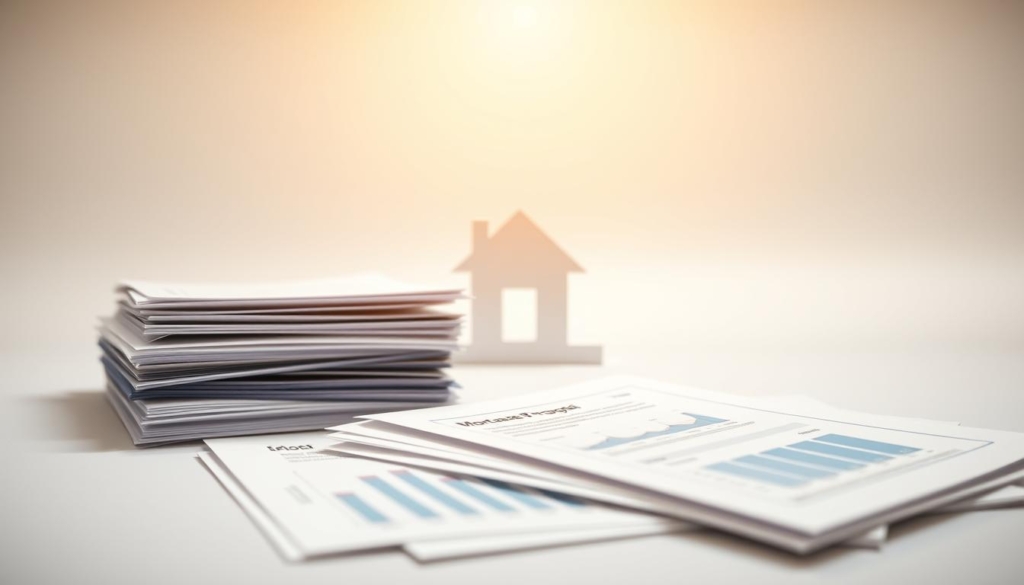
Applying for a mortgage after a consumer proposal can be tough. A consumer proposal is a legal way to settle debts. It helps Canadians manage their money better and work towards getting their credit back.
It’s important to know how a consumer proposal affects getting a mortgage. Several factors come into play:
- Credit report duration: A consumer proposal stays on your credit report for three years after it’s done or six years from when you filed it.
- Waiting periods for traditional lenders: Usually, you have to wait two years after the proposal is fully settled.
- Mortgage insurance restrictions from CMHC: You can’t get insurance until two years after you’re done with the proposal.
Using alternative credit data can really help with mortgage applications. Lenders are starting to see that credit scores don’t tell the whole story. Strategic approaches to rebuilding creditworthiness can help you get past financial hurdles.
Here are some ways to improve your chances of getting a mortgage after a consumer proposal:
- Save up for a 20% down payment.
- Open two new credit accounts with $3,000 limits.
- Get your credit score up to around 700.
- Show that you can make payments on time every month.
Alternative lenders might offer better options for those with poor credit. But, they usually charge higher interest rates. You’ll need to gather lots of documents and work with mortgage experts who get your situation.
Interest Rates and Additional Costs
Understanding subprime mortgages is key for those with bad credit. Bad credit mortgage lenders charge more to cover their risks. This includes higher interest rates and extra fees.
Understanding Higher Interest Rates
Credit scores affect how much you can borrow. If your score is low, you’ll likely pay more in interest. Here are some important points:
- Credit scores below 680 may result in interest rates 2-4% higher than prime rates
- Each 20-point drop in credit score can trigger an interest rate adjustment
- Alternative lenders may charge premium rates for higher-risk borrowers
Additional Fees and Charges
Subprime mortgages have extra costs to consider:
| Fee Type | Typical Cost |
|---|---|
| Loan Processing Fee | 1% of mortgage value |
| Broker Finder’s Fee | 1% of mortgage value |
| Private Mortgage Insurance | Higher premiums for low credit scores |
“Understanding the full cost of a mortgage goes beyond the interest rate. Borrowers must consider all associated fees and possible long-term financial effects.”
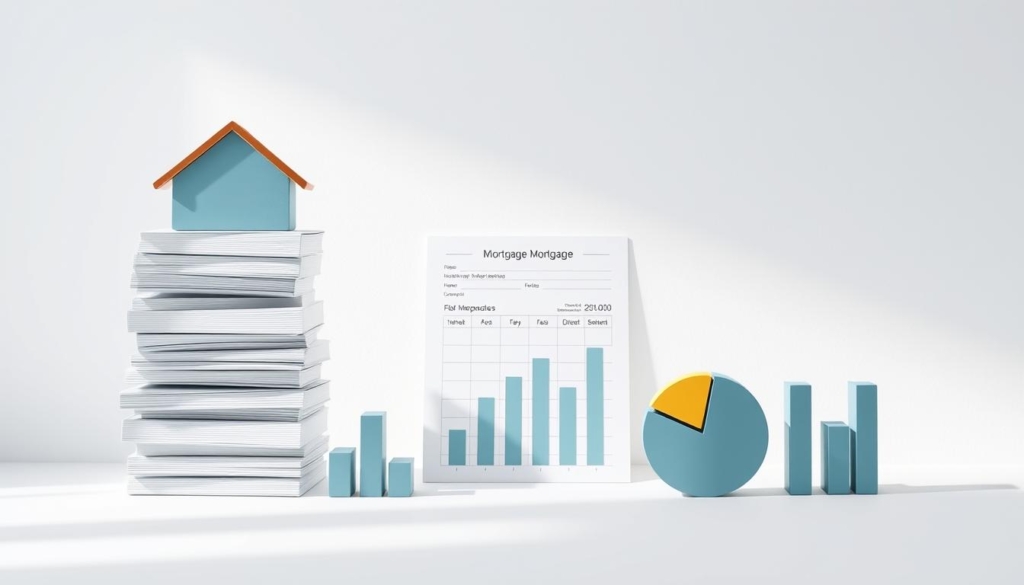
Pro tip: These extra costs might seem overwhelming. But, they can be a chance to improve your credit. Making timely payments and managing your credit well can lead to better mortgage terms later.
Rent-to-Own Programs as an Alternative

Rent-to-own programs are a special way for first-time buyers to own a home. They help those who can’t get a mortgage because of bad credit. It’s a chance for people to own a home even when they can’t get a loan.
These contracts last from 1 to 5 years. Key features of these programs include:
- Upfront option fees ranging from 2% to 5% of the property’s value
- Monthly rent payments that partially contribute to the future down payment
- Ability to lock in a purchase price during the lease period
Different rent-to-own programs in Canada have different rules. For example:
- Royal Rouge Properties requires a minimum option fee of $15,000 for homes up to $375,000
- HOS Financial mandates the greater of $10,000 or 3% of the home purchase price
- Jaag Properties asks for a 3% minimum down payment
It’s important to weigh the good and bad sides of these programs. They can help improve your credit and save for a down payment. But, there are also risks. About 25% of people use these programs to boost their credit before getting a regular mortgage.
The key is understanding the specific terms and possible financial effects of your rent-to-own agreement.
These programs are available in many provinces, like Ontario, Alberta, and British Columbia. They offer a chance for people with credit issues to become homeowners.
Achieving Homeownership with Bad Credit: Final Thoughts and Resources
Buying a house with bad credit might seem tough, but it’s doable. The path to owning a home needs careful planning and knowledge of mortgage options in Canada. With credit scores from 300 to 850, there are many ways to make your dream come true.
Improving your credit is key for homebuyers. Focus on paying bills on time, lowering credit card use, and knowing what lenders look for. A 20-point credit score boost can lead to big savings and better loan terms, helping you reach your goal.
At New Homes Alberta, we help clients navigate the mortgage world. We know credit issues don’t stop you from being a homeowner. Our team can guide you through finding alternative lenders, B-lender options, or credit repair, making a big difference in your journey.
Are you ready to move forward? Call New Homes Alberta at (403) 305-9167 for advice on mortgages with less-than-perfect credit. Our experts are here to help you achieve your dream of homeownership, no matter your current financial situation.
